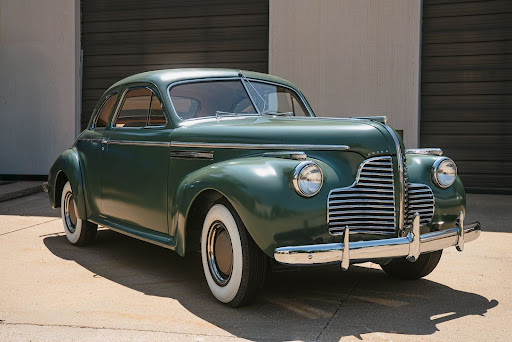
In a world of rapid innovation and constant upgrades, it may seem counterintuitive to celebrate the old over the new. Yet when it comes to automobiles, especially classic cars, the benefits of ownership extend far beyond nostalgia. Old cars, properly restored and preserved, are more than relics of the past. They are assets with tangible advantages for business, legacy, and culture.
One of the lesser-known benefits lies in the U.S. tax code. Under Section 179 of the 2017 Tax Cuts and Jobs Act, business owners who utilize a qualifying asset for more than 50% of business purposes may deduct its cost in the first year. For certain rare vehicles, this deduction can be extraordinary.
Steve Flick, a collector and preservationist, recently highlighted that a car like a 1940s Buick could be eligible for a first-year depreciation credit exceeding $1.2 million if properly qualified. As Flick put it, "I'm not giving out financial advice, but if you are a business and use it more than half the time, there's significant value there. However, always check with your CPA." That alone reframes how companies might look at classic cars, not merely as showpieces, but as legitimate business assets.
The financial incentive, however, is just one layer. Classic cars also represent equity that appreciates with time. Unlike many depreciating consumer goods, well-maintained older vehicles often gain value, sometimes dramatically, as they cross generational lines. A grandparent's treasured car becomes a heritage piece for children and grandchildren, not just in terms of dollars but in memories, identity, and continuity.
"It's really a legacy to pass on to the next generation," Flick explains. "If you are a grandpa, maybe it's something for your grandkids. The car is going to gain value as time goes on." In an age where families seek tangible ways to safeguard wealth, a classic automobile can be as much a generational asset as land, jewelry, or art.
And then there is the cultural and emotional weight: old cars are living time capsules. When most people think of a time capsule, they picture a sealed box hidden in a wall to be rediscovered decades later. But a classic car is a time capsule one can see, touch, and drive. Flick captures this sentiment well: "This is a true living, breathing time capsule that shows human ingenuity in engineering with no computers. Back then, it was all done with a compass and a protractor."
Each vehicle embodies a story of craftsmanship from an era before digital precision, when innovation was guided by pencils, paper, and pure intellect. These cars are rolling testaments to how far human engineering has come, and how much beauty can emerge from simplicity.
The collector's world offers striking examples. Flick himself spent three years overseeing a meticulous restoration of a 1940 Mint Buick 56 S Mule. Discovered in a Texas garage, covered in decades of dust, the car was nearly lost to time. But with painstaking care, craftsmen across the country revived it to concours-level perfection. Its engine was rebuilt in Kansas City, upholstery restored to factory specs in Pennsylvania, and bodywork returned to its original luster by a dedicated paint crew. The result is not just a car, but an artifact, an authentic reflection of American design and innovation at the dawn of the pre-war 1940s.
Interestingly, vehicles like this Buick now sit at the intersection of cultural heritage and modern investment strategy. They appeal to ESG-conscious investors seeking tangible legacy assets, while also catching the attention of collectors who traditionally favor European exotics. Auction houses are reporting seven-figure sales for full-classic American cars, once overlooked compared to their Italian or German counterparts.
The 1940 Mint Buick 56 S Mule will make its quiet debut at the Anstine Auction on Friday, September 12, 2025, at 6:30 PM CST at the Kansas City Auto Museum. The discreet placement is telling. Increasingly, high-net-worth individuals prefer controlled, private pathways to ownership of heritage assets. In many ways, the auction of such a car illustrates the broader trend: classic vehicles are no longer niche indulgences but mainstream symbols of legacy, equity, and identity.
Owning an old car is not for everyone. It requires patience, resources, and an appreciation for history. But for those willing to look past the surface, the rewards are layered: financial through tax benefits, familial through generational wealth, and cultural through the preservation of human ingenuity. In a society obsessed with the next model, the next update, and the next release, old cars stand as reminders that sometimes the most valuable things are those that carry people back in time while steadily building value for the future.







